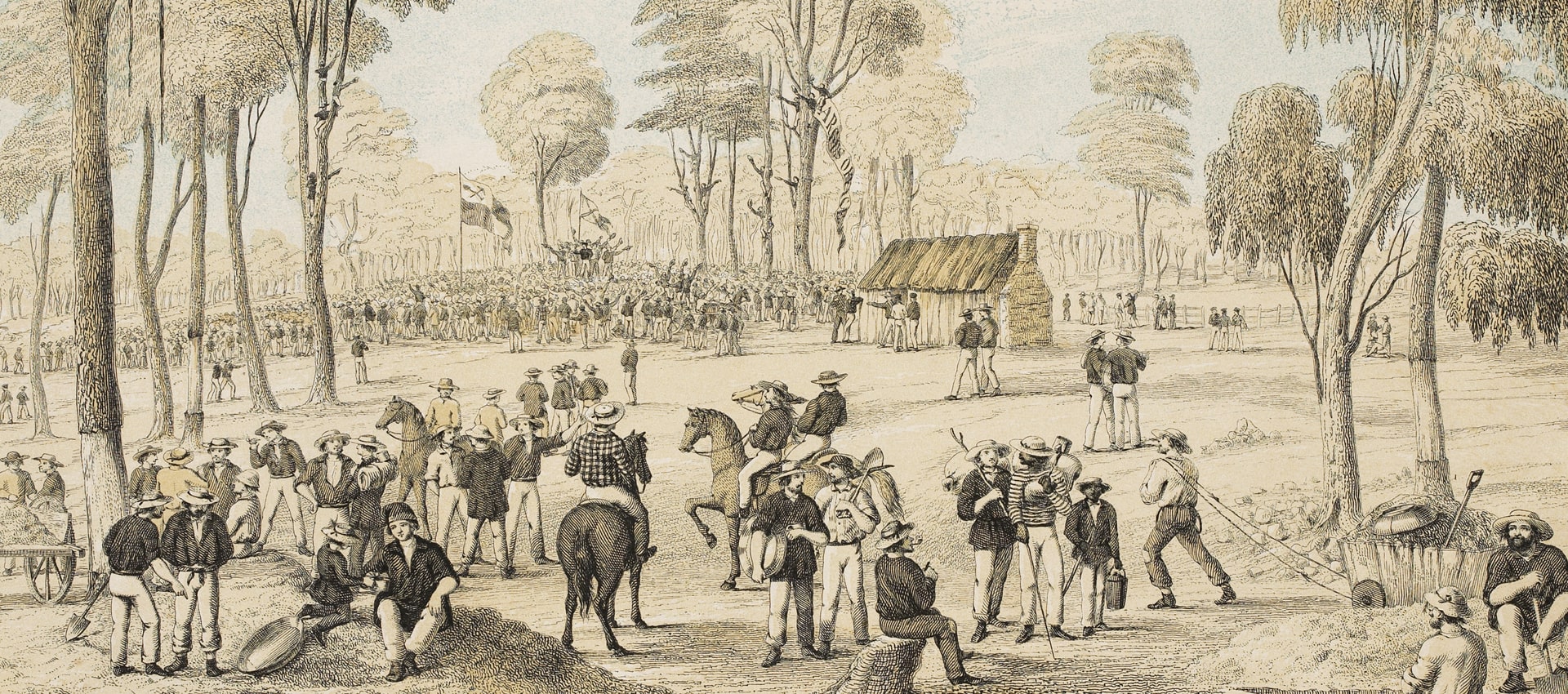David Tulloch’s 1851 drawing provides the only visual record of the Diggers’ Monster Meeting. In 1852 Thomas Ham made a lithograph of Tulloch’s drawing and accompanied it with his words describing who was there and what they did.

The exceeding richness of the Mount Alexander diggings, and the extraordinary success of many of the miners, led the Government to issue a proclamation, raising the licence from thirty shillings to three pounds. As soon as these intentions became known, a public meeting of all the miners was convened, and took place on the 15th of December, 1851. This resolve of the Governor and Executive Council was injudicious, since, in New South Wales, the Government proposed to reduce the fee to 15s.; and among the miners in Victoria, dissatisfaction was rife, on account of the apparent disregard by the Government of the wants and wishes of the people engaged in the gold diggings, and because of the absence of all police protection, while there appeared to be no effort made to remedy this defect. Indignation was, therefore, unequivocally expressed at the several diggings meetings which were held, and at which it was resolved to hold a monster meeting. The ‘Old Shepherd’s Hut’, an outstation of Dr Barker’s, and very near the Commissioners’ tent, was the scene chosen for this display.
For miles around work ceased, cradles were hushed, and the diggers, anxious to show their determination, assembled in crowds, swarming from every creek, gully, hill, and dale, even from the distant Bendigo, twenty miles away. They felt that if they tamely allowed the Government to charge £3 one month, the licensing fee might be increased to £6 the next; and by such a system of oppression, the diggers’ vocation would be suspended.
It has been computed that from fifteen to twenty thousand persons were on the ground during the time of the meeting. Hundreds, who came and heard, gave place to the coming multitude, satisfied with having attended to countenance the proceedings. The meeting ultimately dispersed quietly, thereby disappointing the anticipation of those who expected, perhaps even desired, a turbulent termination. The majority determined to resist any attempt to enforce this measure, and to pay nothing; but, happily, they were not reduced to this extremity, since his Excellency wisely gave notice that no change would be made in the amount demanded for the license.
As a moral demonstration, nothing could be more admirable. It proved that, as a body, the Miners were not a demoralised and treasonable set of men. While jealous of their rights, and prepared to withstand oppression, they were not desirous to evade any just claim of the Government; they were willing to submit to equitable taxation. The order, diligence, and industry of the Miners are remarkable. Among the sixty or seventy thousand men, congregated in engagements differing widely from the ordinary pursuits of life, some may be expected to exhibit irregularities which, in a more civilised position, they probably would not permit themselves; still the good order is surprising, infractions of the law being few, and exceptions to the rule.
The meeting brought fully into view this state of things. There were few who did not cease from work to attend, yet no disorder or intemperance was seen. The trees in this locality are chiefly stringy bark; some of them are peeled of their covering, as many persons prefer erecting bark huts to living in comfortless tents. The various groups, and costumes of the men, are characteristic of our gold digging community.
